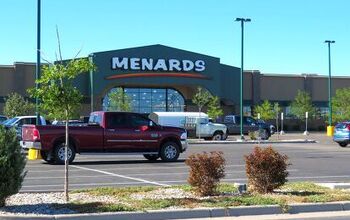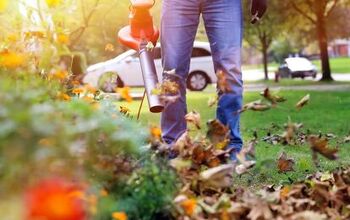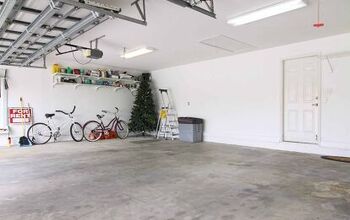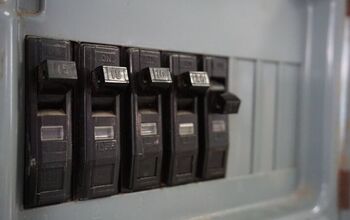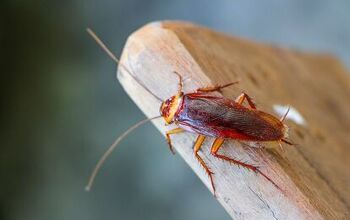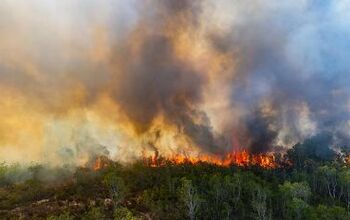What To Do In Your Yard Before The First Frost Hits

The first frost of the year is enough to make the average homeowner accept that winter has arrived. However, that doesn’t mean your yard has to suffer, that is, if you adequately prepare it. That’s why we put together an easy-to-follow guide about what to do in your yard before the first frost.
Before the first frost, you must mow your lawn, aerate it, and fertilize the soil to keep it strong. It’s also important to dethatch your lawn and use the debris and grass clippings for compost. This is a great time to rake the leaves on your lawn, but it’s a good idea to leave some of them to support pollinators during the winter.
The key is to closely monitor the news or a weather app on your phone. That way, you can give yourself more than enough time to prepare your yard for the first frost. Follow along as we explore what to do in your yard before the first frost.
How To Prepare Your Yard For The First Frost
1. Keep Up With Watering
Some people give up on watering their lawns and plants once the temperature drops. However, doing so can weaken and even kill your grass and flowers. Continually watering them until the first frost of the year can help keep them safe and healthy throughout the winter.
Most of your plants will probably go dormant during the winter, but they must have a strong foundation beforehand. Your lawn may need as little as 1” of water per week, depending on the climate and your location. Keep running your sprinklers during the fall until the temperature drops to 40 degrees Fahrenheit and stays there.
However, you may want to reprogram your sprinkler system so it doesn’t run every day. This can help you save money on your water bill and protect your lawn from being over-watered. Keep track of the first frost and stop watering your lawn after that if the temperatures stay low.
2. Mow The Lawn One More Time
There’s no point in mowing your lawn after the first frost if the temperature is going to remain low. Doing so can damage your lawn, cause soil compaction, and make the grass grow unevenly when the spring returns. Ideally, you should stop mowing your lawn when the temperature consistently stays below 50 degrees Fahrenheit.
Keep your grass at 2” to 2 ½” long to help it easily bounce back when the winter finally ends. Doing so can help protect your lawn from foot traffic, ice, snow, and freezing temperatures. If it’s too long, the blades may break off in weird patterns, and make your lawn look patchy and strange.
Leaving your grass too long can also welcome unpleasant pests to nest in your lawn until the winter passes. After mowing the final time of the year, you can move on to other pre-frost yard chores.
3. Clean Your Lawn
It’s important to clean your lawn before the first frost, as it will make your other pre-winter yard chores easier. Aerating a lawn is difficult if it’s covered in debris and clumps of dirt. Your best bet is to use a dethatching rake, as it can easily remove grass clippings and other debris.
Ideally, you should do this after the final mowing of the season, or else your lawn will get messy again. That said, you may want to keep some of the grass clippings and dirt clumps, as they may be useful. For example, you can add it to your compost bin to enrich the pile with nutrients.
Otherwise, you can use the thatch as mulch to prevent soil erosion and keep stubborn weeds at bay. Some people even mix thatch in with soil, as the nutrients can help promote healthy growth.
4. Aerate The Grass
Now that your lawn is clean, it’s time to aerate it to prepare your lawn before the first frost. Aerating your lawn is important because it helps promote healthy airflow and prevent soil compaction. Lawn aeration involves punching a bunch of small holes in the soil using an aerator.
The process should only take a few hours, unless your home sits on a massive property. In that case, it’s worth hiring a professional lawn care service, as it can be rigorous. Otherwise, you can easily rent an aerator for a few hours for $80, on average, or between $40-$120.
Keep in mind that you must thoroughly water your lawn after aerating it. Doing so can help your the grass heal and promote healthy root growth. That said, overwatering after aerating is bad for lawn health, so check the forecast and avoid doing so if it’s going to rain.
5. Fertilize The Lawn
There’s no better time to fertilize your lawn than right after aerating it. That’s because the fertilizer can easily enter the small holes left in your lawn and deliver nutrients to the soil. Ideally, you should wait 2 days to fertilize your lawn after aerating it.
This short waiting period gives your lawn time to heal, but the holes will still be there and easily penetrable. Fertilizers contain essential lawn nutrients, such as potassium, nitrogen, phosphorus, calcium, and magnesium. However, the first three of the aforementioned nutrients are most important to lawn health.
The goal is to infuse your lawn with nutrients to prepare it for the late fall and winter before the first frost. That way, your lawn can easily withstand the cold temperatures and the trauma associated with it.
6. Rake (Some Of) The Leaves
Throughout your pre-frost yard checklist, there’s a good chance that leaves will keep falling. You may instinctively rake and dispose of them all, but that’s not always a good idea. That’s because leaves release many vital nutrients as they decompose, that your lawn can benefit from.
Piles of dead leaves also give pollinators plenty of hiding spots to nest in throughout the winter. The pollinators can stay safe in leaf piles and get a head start on pollinating your plants in the spring. Without hiding spots, they may be slow to return to your yard when the spring arrives.
Fallen leaves can also help with moisture retention, which helps soil drainage. That said, you should pick up some of the leaves, as too many left on the ground can smother your lawn and deprive it of sunlight. Pick some parts of your lawn to dedicate to pollinators, and rake the rest of the leaves.
7. Winterize The Sprinkler System
You should never wait until after the first frost to winterize your sprinkler system. The first frost should be your deadline to prepare your sprinkler system for the winter, so don’t wait too long and regret it. In most areas, homeowners typically winterize their sprinkler systems in October or November, the latest.
It’s worth hiring a sprinkler service to winterize your sprinkler system. Otherwise, you can save money and do it yourself, starting with shutting the water off. Next, connect a compressor to each zone and use it to blow out the remaining water.
That is the most important step, as any remaining water can cause the lines to freeze. The last thing you want is for the pipes to burst during the fall and winter.
What NOT To Do Before The First Frost
Some people understandably get gung-ho about yardwork when the first frost of the year approaches. However, doing too much can backfire and cause more trouble for your yard than it’s worth. You must avoid doing a few things just before the first frost, including:
- Don’t mulch your yard and garden.
- Don’t prune your plants before the first frost.
- Never water your plants after the frost.
It may seem like a good idea to apply mulch right before the first frost, but it can backfire. There’s a good chance that mold will form, as the mulch will retain moisture and harden. Because of that, it will stay moist much longer than it would if it were warmer outside.
Similarly, some people prune their trees and shrubs right before the first frost of the year with great intentions. Pruning encourages new growth, but that growth will die right away if you prune the shrub before the frost. Finally, you shouldn’t water your lawn or plants after the first frost, as you can damage the plants and soil.
Summing It Up
Keep watering your lawn, even if it’s just 1” per week, until the temperature drops below 40 degrees Fahrenheit. It’s also important to mow the lawn one more time, then aerate and fertilize it. Dethatch the lawn and clean it up, but leave some fallen leaves to nourish your lawn and help pollinators.
Related Guides:

Nick Durante is a professional writer with a primary focus on home improvement. When he is not writing about home improvement or taking on projects around the house, he likes to read and create art. He is always looking towards the newest trends in home improvement.
More by Nick Durante
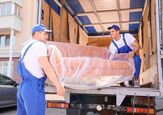
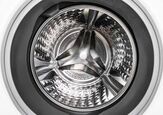









![Finishing Basement Without Permit [Is It Really Illegal?]](https://cdn-fastly.upgradedhome.com/media/2023/07/31/9070078/finishing-basement-without-permit-is-it-really-illegal.jpg?size=350x220)

![10 Best Scroll Saws for 2022 [Ultimate Reviews & Buyer's Guide]](https://cdn-fastly.upgradedhome.com/media/2023/07/31/9070684/10-best-scroll-saws-for-2022-ultimate-reviews-buyer-s-guide.jpg?size=350x220)
